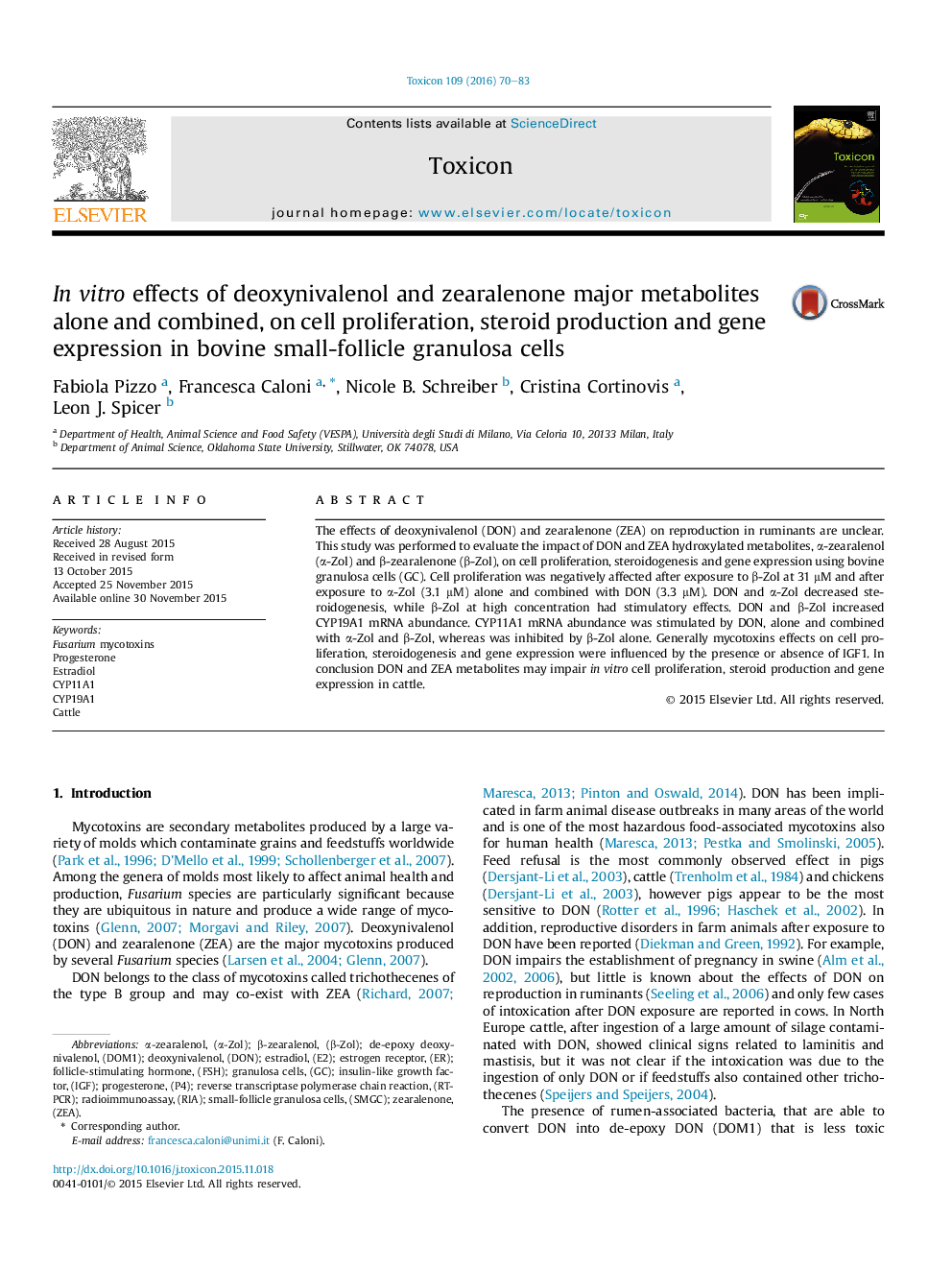| Article ID | Journal | Published Year | Pages | File Type |
|---|---|---|---|---|
| 8395075 | Toxicon | 2016 | 14 Pages |
Abstract
The effects of deoxynivalenol (DON) and zearalenone (ZEA) on reproduction in ruminants are unclear. This study was performed to evaluate the impact of DON and ZEA hydroxylated metabolites, α-zearalenol (α-Zol) and β-zearalenone (β-Zol), on cell proliferation, steroidogenesis and gene expression using bovine granulosa cells (GC). Cell proliferation was negatively affected after exposure to β-Zol at 31 μM and after exposure to α-Zol (3.1 μM) alone and combined with DON (3.3 μM). DON and α-Zol decreased steroidogenesis, while β-Zol at high concentration had stimulatory effects. DON and β-Zol increased CYP19A1 mRNA abundance. CYP11A1 mRNA abundance was stimulated by DON, alone and combined with α-Zol and β-Zol, whereas was inhibited by β-Zol alone. Generally mycotoxins effects on cell proliferation, steroidogenesis and gene expression were influenced by the presence or absence of IGF1. In conclusion DON and ZEA metabolites may impair in vitro cell proliferation, steroid production and gene expression in cattle.
Keywords
α-Zearalenol(RIA)(ER)(GC)(RT-PCR)CYP19A1CYP11A1β-zearalenolDeoxynivalenolEstradiolde-epoxy deoxynivalenolradioimmunoassayZearalenonegranulosa cellsInsulin-like growth factorFusarium mycotoxinsfollicle-stimulating hormonereverse transcriptase polymerase chain reactionProgesteroneCattleEstrogen receptor
Related Topics
Life Sciences
Biochemistry, Genetics and Molecular Biology
Biochemistry, Genetics and Molecular Biology (General)
Authors
Fabiola Pizzo, Francesca Caloni, Nicole B. Schreiber, Cristina Cortinovis, Leon J. Spicer,
